Imagine your organization as a high-performing orchestra. Each department, a skilled musician, plays its part to create a harmonious symphony of productivity. Yet, sometimes, the instruments are out of tune, notes are missed, and the flow falters. This is where process automation and CRM (Customer Relationship Management) systems come in, acting as the conductor, ensuring seamless collaboration, flawless execution, and a truly captivating performance.
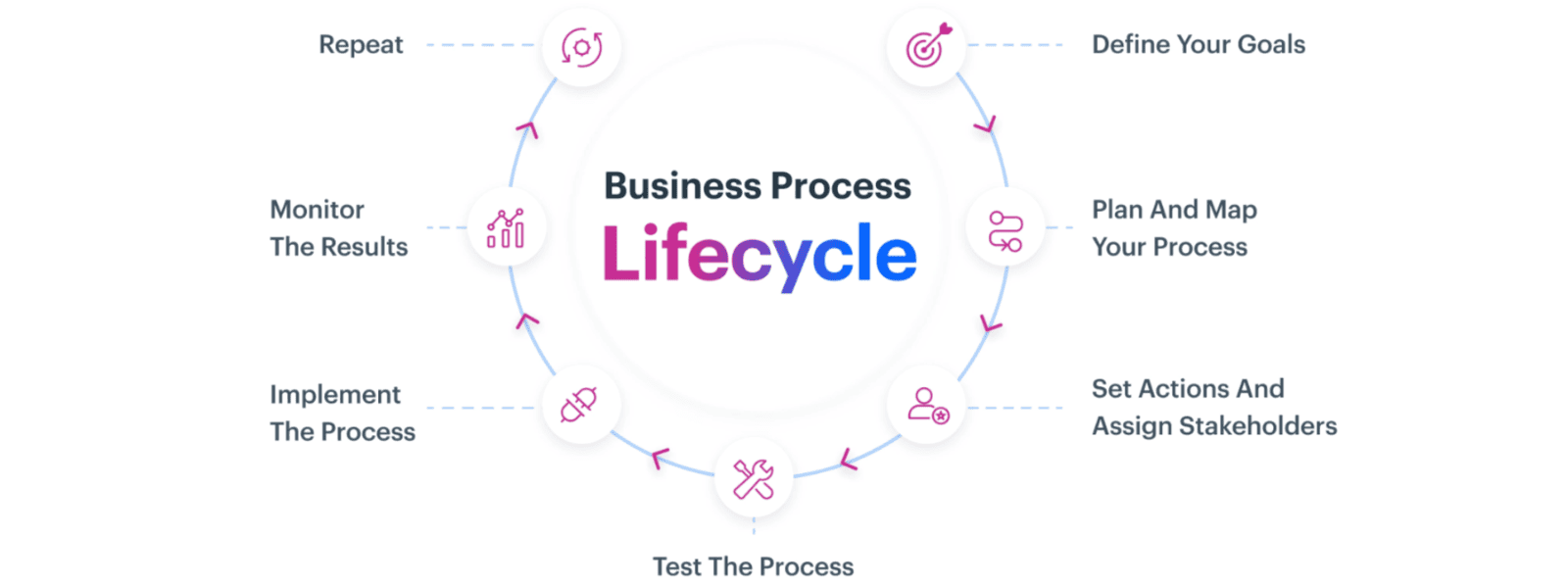
The Case for Automation and Streamlined CRMs
In today's fiercely competitive business landscape, efficiency is king. A recent McKinsey Global Institute report **(McKinsey Global Institute, "A future that works: Automation, employment, and productivity," January 2017) estimates that up to 800 million jobs could be automated by 2030. While this may sound alarming, it doesn't signal job displacement, but rather a shift towards humans overseeing and optimizing automated processes.
Process automation involves leveraging technology to replicate repetitive, manual tasks. This allows your team to focus on higher-value activities, like strategic planning, building relationships, and innovating. CRM systems, on the other hand, provide a centralized platform to manage all customer interactions. This fosters improved customer service, personalized marketing campaigns, and ultimately, increased sales and customer retention.
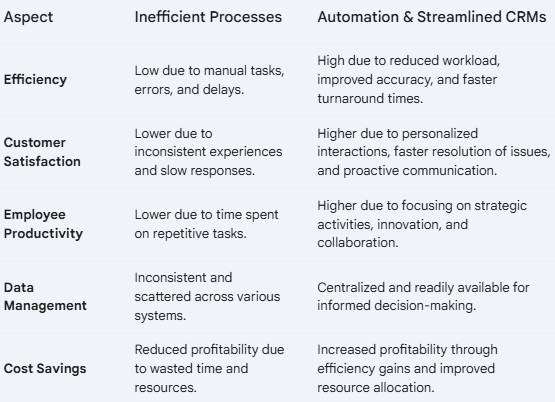
The Customer Journey and Beyond: A Holistic Approach
The customer journey doesn't begin when a potential client lands on your website. It starts with an initial touchpoint, perhaps a social media post, compelling content on a blog, or even a recommendation from a satisfied customer. Each touchpoint serves as a crucial opportunity to nurture a relationship and ultimately convert the visitor into a loyal customer.
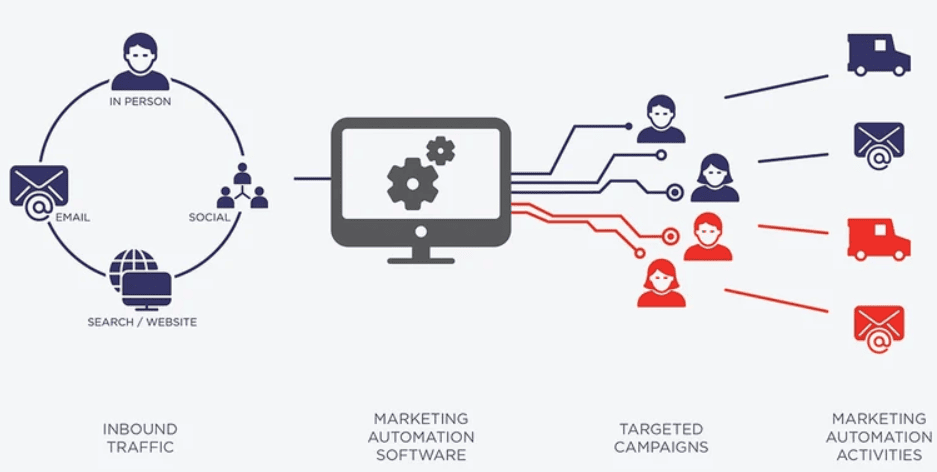
Key Touchpoints and KPIs:
- Social Media: Engagement rate, reach, website click-through rate
- Website: Page views, time on site, lead generation forms completed
- Email Marketing: Open rates, click-through rates, conversion rates
- Customer Service Interactions: Average resolution time, customer satisfaction ratings
- Sales Team Interactions: Lead conversion rates, average deal size, customer lifetime value
Understanding the Journey: Post-Touchpoint Considerations
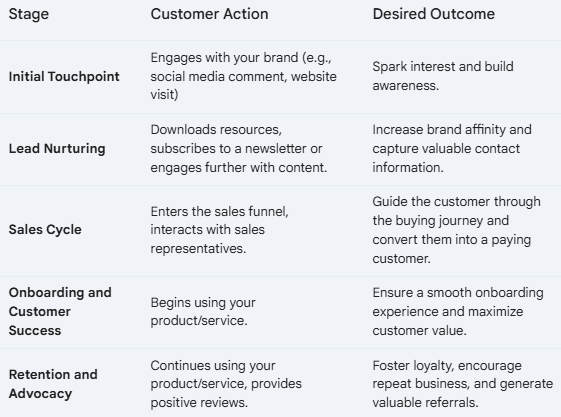
This customer journey is applicable for both B2C (Business-to-Consumer) and B2B (Business-to-Business) organizations, albeit with some variations. B2C interactions may be more direct, while B2B sales cycles typically involve longer decision-making processes and multi-level stakeholder involvement. However, the core principles of nurturing relationships, providing exceptional service, and ultimately building customer loyalty remain paramount.
A Mid-Section Reflection: The State of Play and Optimizing for Success
While many businesses recognize the value of automation and CRM, adoption rates can be slow. Common challenges include:
- Limited IT Infrastructure: Investing in process automation and CRM systems may seem daunting for smaller businesses.
- Data Silos and Inconsistent Data: Organizations often struggle with fragmented data, making it difficult to gain a unified view of customer interactions and operations.
- Resistance to Change: Employees may be resistant to adopting new technologies, particularly if they fear job displacement or disruption to their routines.
To overcome these challenges and optimize the benefits of automation and CRM, organizations should:
- Invest in IT Infrastructure: Prioritize the development of a robust IT infrastructure that can support automation and CRM systems.
- Implement Data Governance: Establish clear data governance policies to ensure data quality, consistency, and accessibility across the organization.
- Foster a Culture of Innovation: Encourage a mindset of continuous improvement and innovation, emphasizing the benefits of automation and CRM for employees.
- Provide Adequate Training and Support: Offer comprehensive training programs to help employees understand and utilize automation and CRM tools effectively.
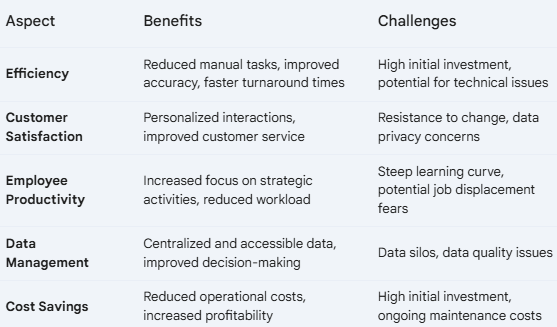
Key Considerations for Erphub Clients
Erphub's clients, operating in a diverse range of industries, have unique needs and challenges. When considering automation and CRM solutions, it's essential to:
- Align with Business Goals: Ensure that automation and CRM initiatives are aligned with the organization's overall strategic objectives.
- Evaluate Scalability: Choose solutions that can scale with the business as it grows and evolves.
- Prioritize User Experience: Select tools that are intuitive and easy to use for employees and customers.
- Consider Integration: Evaluate how well the automation and CRM systems can integrate with existing systems and workflows.
Conclusion: A Path to Operational Excellence
By strategically implementing process automation and CRM systems, Erphub clients can unlock significant benefits, including increased efficiency, improved customer satisfaction, and enhanced profitability. By addressing the challenges and carefully considering the key factors outlined in this article, organizations can embark on a journey towards operational excellence.

